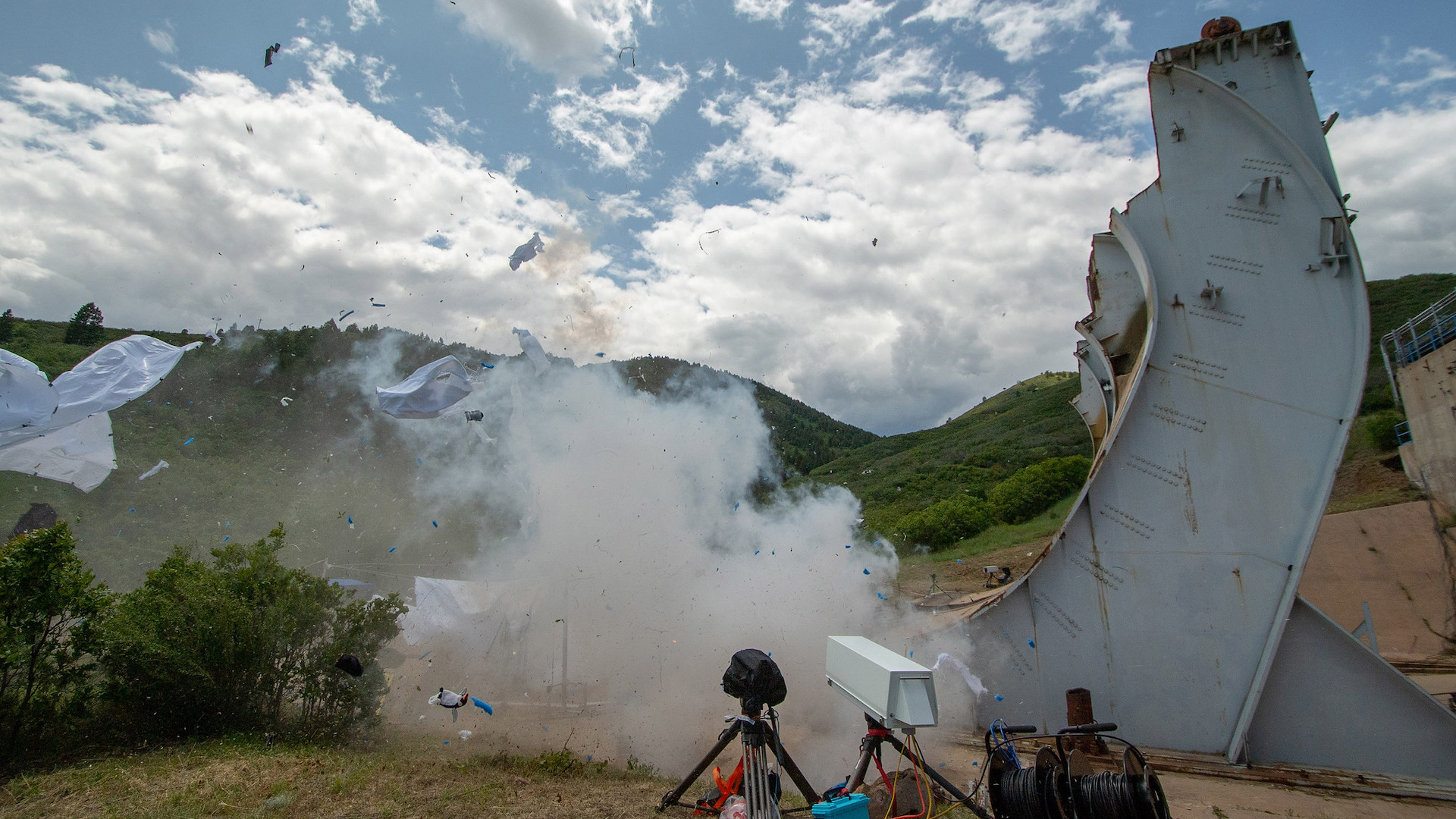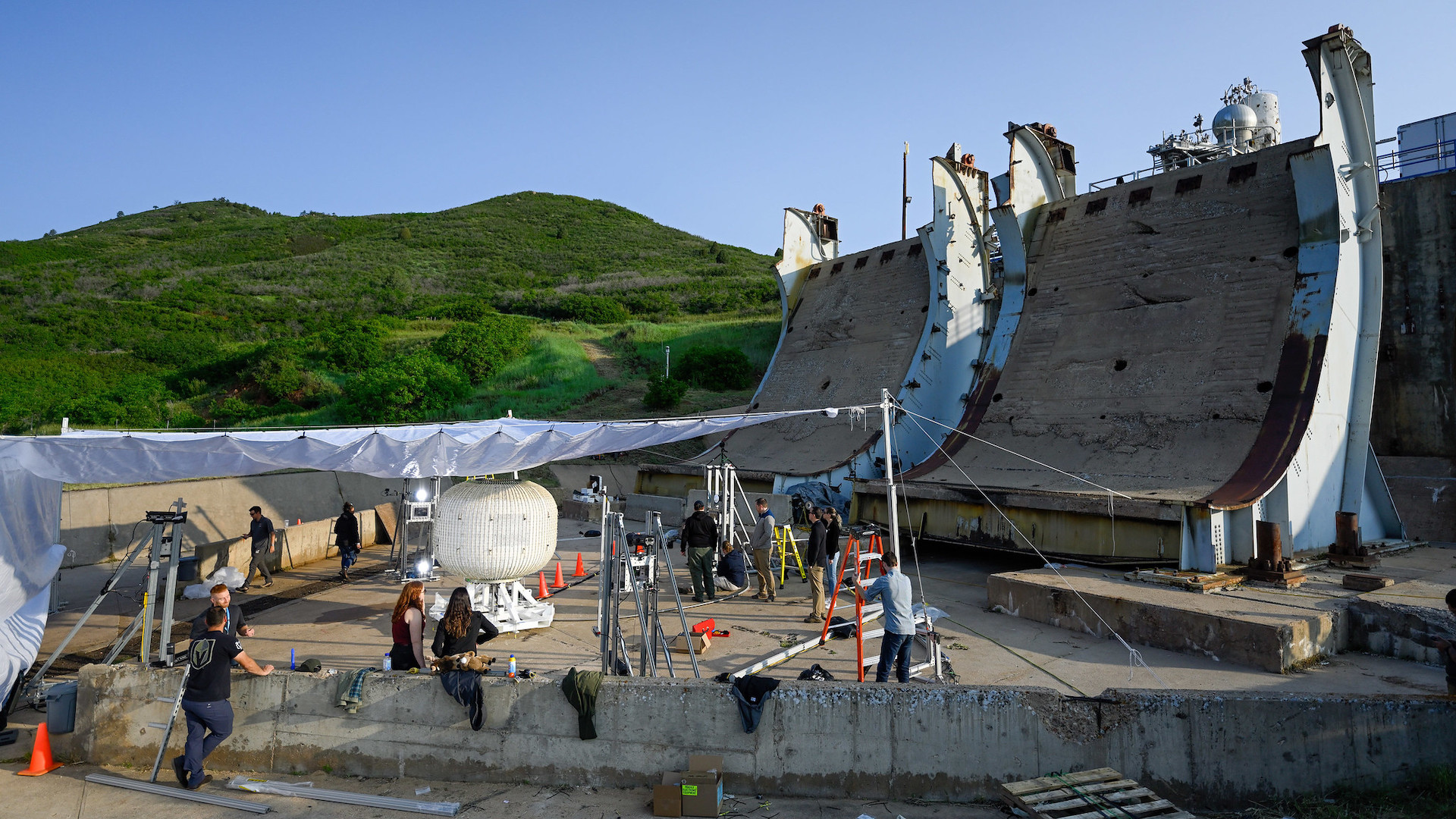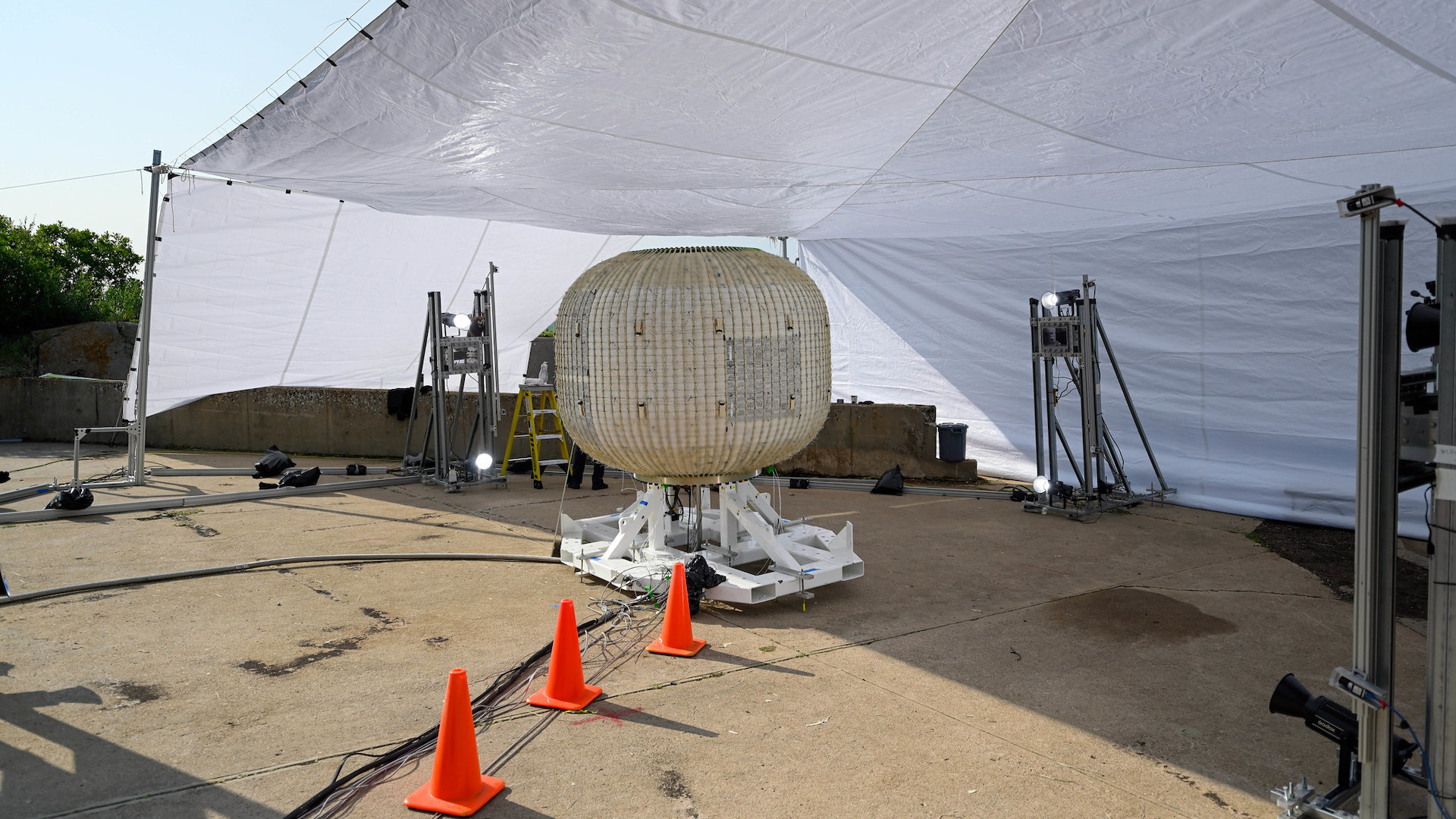
It's inevitable. Testing of spaceflight hardware sometimes leads to explosive results.
In the most recent example, aerospace giant Lockheed Martin recently completed a successful burst test of the company's sub-scale inflatable space module. The test was conducted at Lockheed's facility in Denver, Colorado, on June 14, on the same test stand used for the historic Titan rocket.
Before it exploded, the inflatable module reached a pressure of 253 psi, roughly six times greater than the module's rated operating pressure. This was the second such burst test Lockheed Martin has performed on its inflatable space habitat technology. The same procedure was conducted on a similar module in December of last year. The outcome of this second test validates the results measured in the first, and allows Lockheed to proceed with further development for their full-scale designs.
Related: Under pressure! Watch a Lockheed Martin inflatable space habitat explode (video)

One "surprising difference" the company noted between the first test and the most recent was the unexpected launching of the module's test stand, which broke free from its confinements and was thrown into the air when the habitat burst. A Lockheed statement praised the occurrence, saying it demonstrated "just how much energy this inflatable structure is able to contain."

The company's inflatable habitat concept is being developed as a part of NASA's NextSTEP program, which aims to advance technologies that enable prolonged human spaceflight beyond low Earth orbit (LEO). NASA's Artemis program will send a crewed mission around the moon in late 2024 on Artemis 2, and a crewed mission to the lunar surface on Artemis 3, in 2025.
While those missions are epic feats of their own, the space agency is essentially using those as stepping stones to build a permanent presence in orbit around the moon and on the surface, which will in turn help develop the technologies needed for future excursions to Mars.

Inflatable habitats like the one Lockheed is creating are ideal for space infrastructure because of their lightweight and initial small size. For any launch to space, weight is critical. The lighter any particular payload, the easier it is to physically break free from Earth's orbit. Rather than lugging heavy, rigid units to orbit, like the majority of habitats used to construct the International Space Station (ISS), the small, easily transportable versatility of inflatable modules offers a cost-effective and more efficient answer to building large-scale structures in space.
"Testing at the system level is one of the best methods to prove out our design and manufacturing techniques, while providing thousands of critical data points for improvements and updates as we develop the technology," Lockheed Martin senior systems engineer Jonathan Markcity said in the statement. Lockheed engineers constructed the soft portion of the subscale inflatable within an 8-week timeframe, while manufacturing the rest of the module completely in-house.
Now that Lockheed Martin completed its second subscale burst test, the company needs to validate the duration of the structure's operational capabilities. From there, Lockheed will move to full-scale burst tests and incorporate other necessary components like hatches, windows and other life-support materials.







